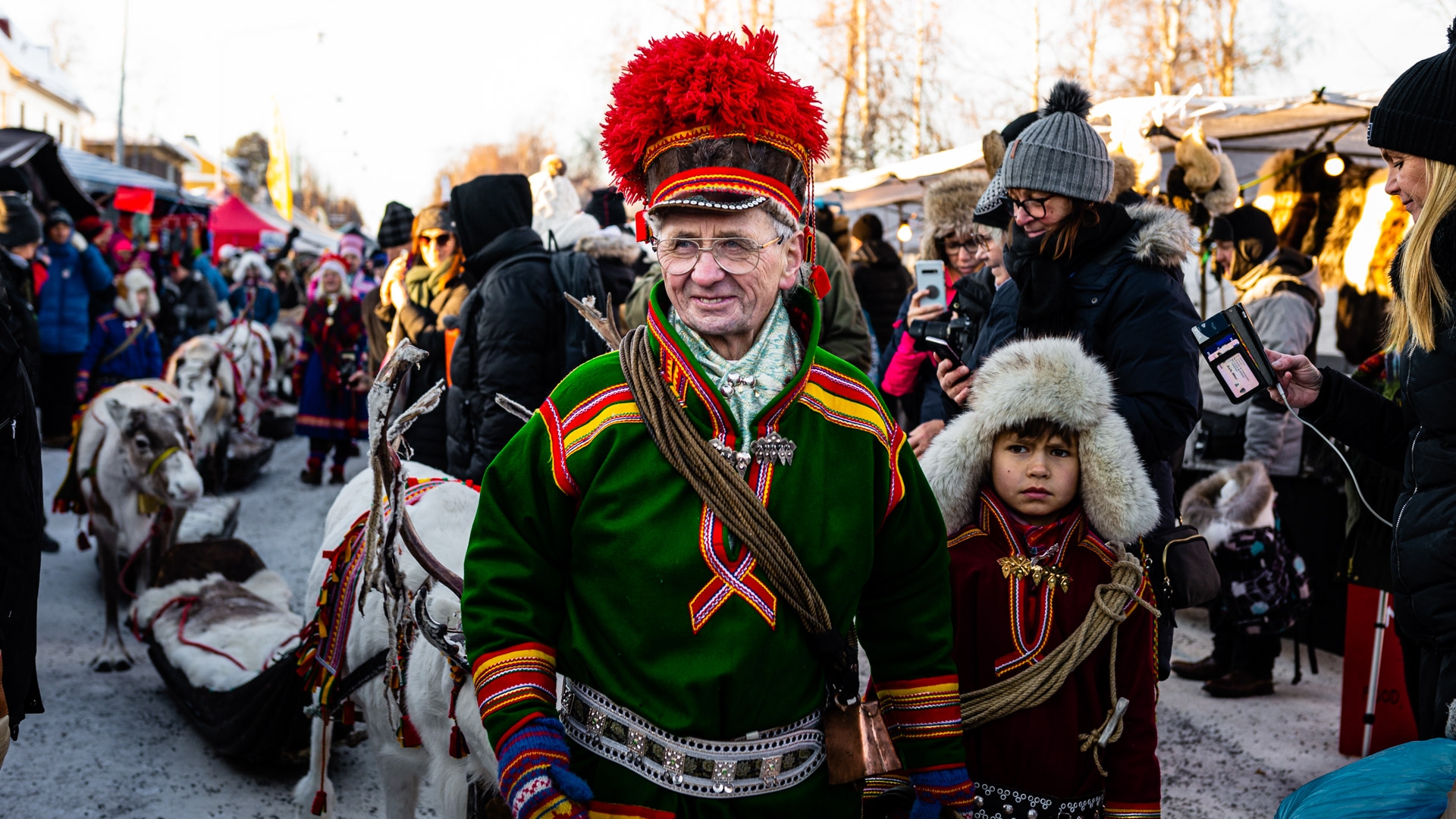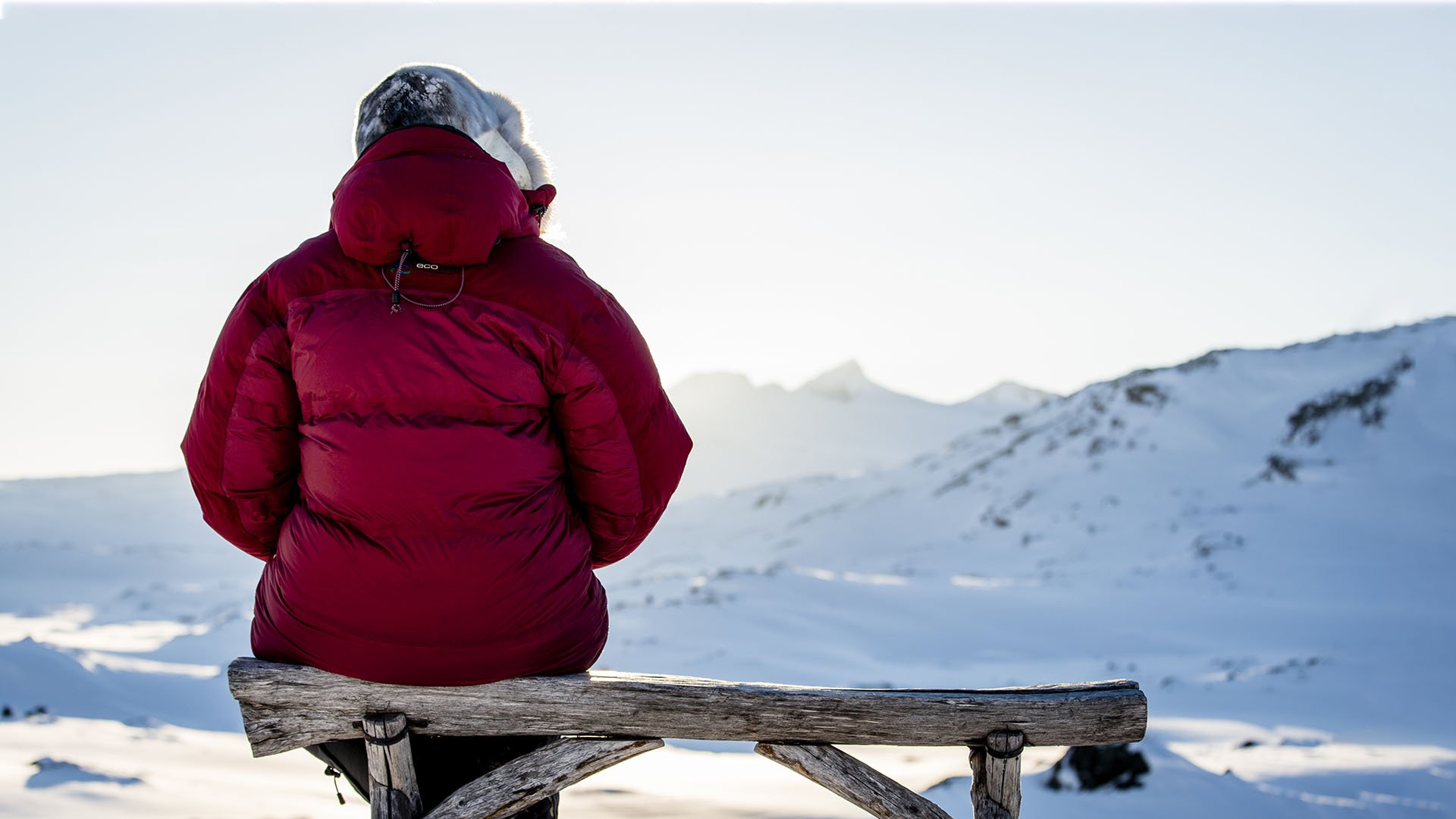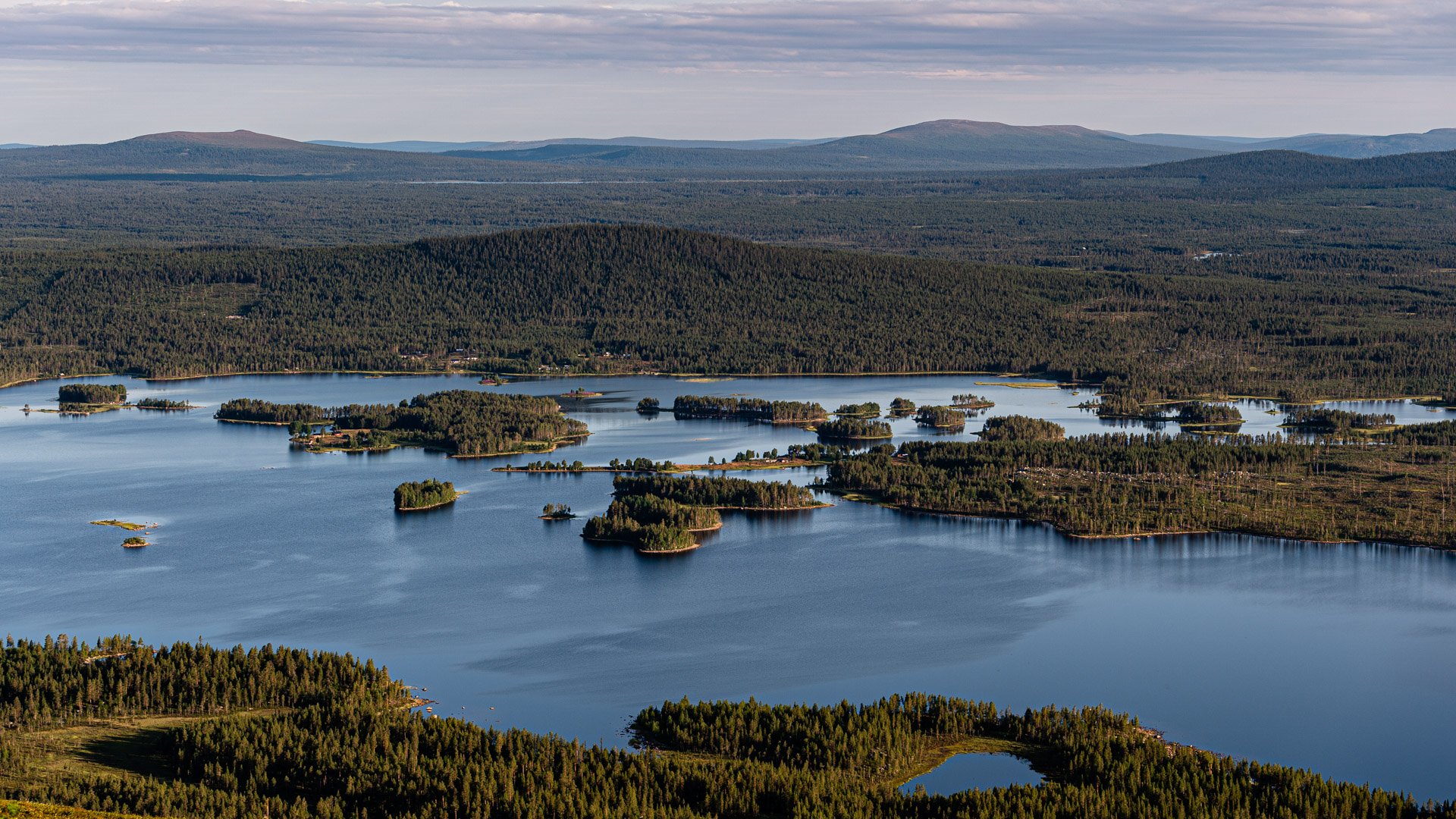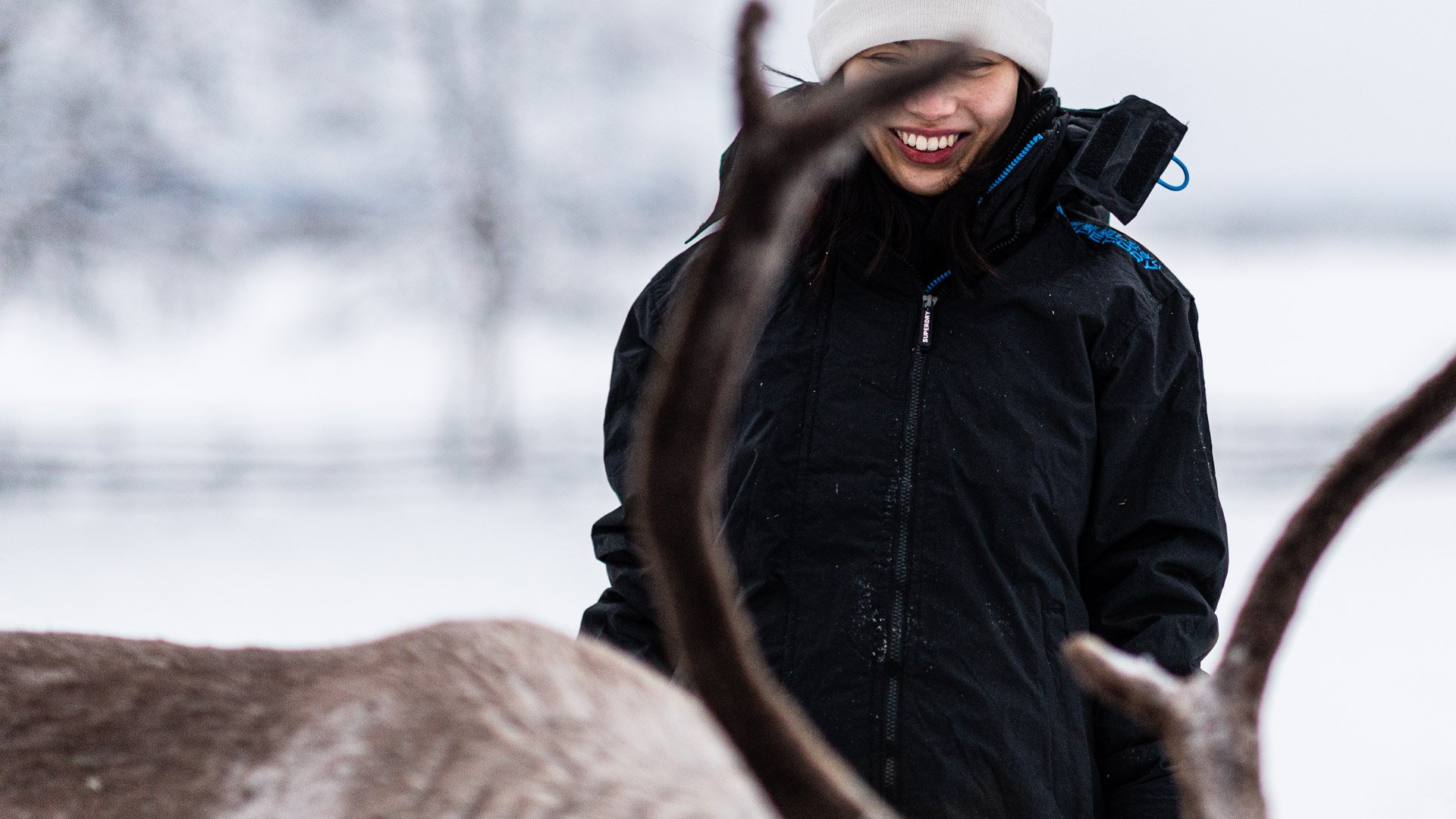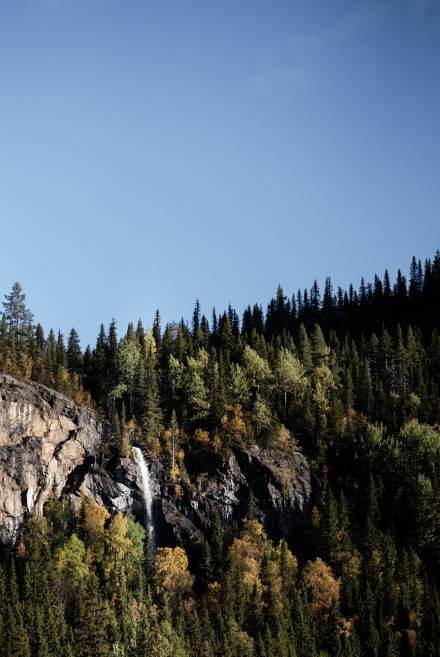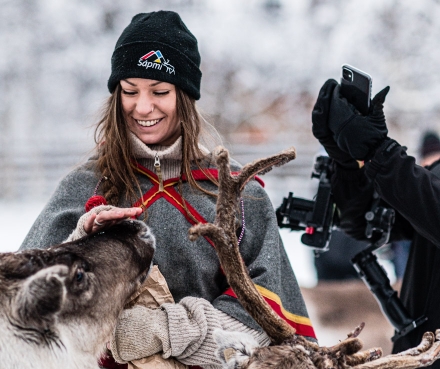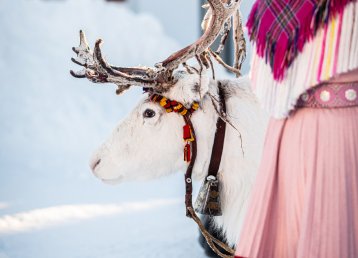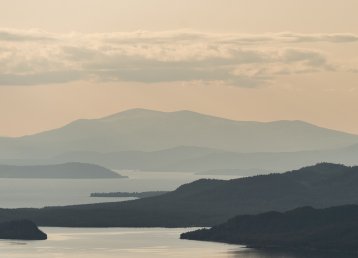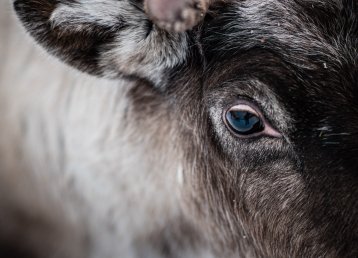There are indigenous peoples living in 90 countries across the globe, and the Sámi are the indigenous people living in the north of mainland Europe. The land of Sápmi covers parts of Norway, Sweden, Finland and Russia, but the Sámi have their own language, culture and customs.
You might know them as the reindeer-herding people of the north that wear colourful traditional clothing, but the Sámi people and culture is so much more than that. Sápmi, the land of the Sámi, holds a richness of tradition, religion, knowledge and culture that is similar to other indigenous people – to some extent – but at the same time very unique.
Eight seasons
If you live your life close to nature, you will eventually recognize that the four seasons of the calendar aren’t enough. That the twelve months named after ancient gods and royalties from the old Roman Empire has nothing to do with you. Hence the Sámi people have eight seasons because there is always a season in-between seasons. At the end of winter, dálvve, the sun, beávie, has returned and the days grow longer and warmer. Spring isn’t far away, but due to the cold nights, the snow will still stay for a while. This is spring-winter, gidádálvve, and probably the best time for many of us living up north. Then comes May – a time that the Sámi knows by the name of Miessemánnu, meaning the time when the calves are born.
Everything in the lives of the Sámi people is revolved around the reindeer, and the eight seasons is also a way of describing the migration of the animal, from winter grazing land to summer pastures. After gidádálvve comes spring gidá, followed by gidágiesse, and giesse, meaning spring-summer and summer. But everything eventually comes to an end, and the summer heat is followed by the fall, the time called tjaktjagiesse, a time for harvest and foraging before tjaktja takes hold, and you have to get everything ready before tjaktjadálvve, and then dálvve will appear. Because, as the saying up here goes, every new day is one day closer to next winter.
Also read
The eight seasonsSápmi
Sápmi is a nation without borders but with a language, history and culture that is common for the whole area. The reindeer is intertwined with man and nature, and the Sámi culture has its roots very far back in time. The word ‘Sámi’ is derived from ‘Sápmi’, which is the name of the geographic area where the Sámi traditionally had their settlements. It is comprised of the northern parts of Norway, Sweden, Finland and Russia. Sápmi has its own flag, in the traditional colours red, blue, yellow and green. If you ever see a map of Sápmi, it might look different depending on when it was made. Especially the southern border has varied throughout the years, and there is archaeological evidence indicating that the Sámi once ventured and lived as far south as Västergötland in Sweden.
Sápmi is the land and the people, the nature and the reindeer, the animals and the light. The midnight sun and the northern lights. The heat from the fire on a sparkling winter’s day and the coolness of a mountain stream after a long day’s hike. Sápmi is the food and the produce. But also human rights and Sámi names. Duodji (handicraft), fishing, and Sámi tourism. The flag and the Sámi colours. The wanderlust and respect for all we see around us. Young and old. And everything in between.
A hymn to home
Lennart Pittja runs the awarded Sápmi Nature Camp in the heart of Sápmi. In summer he spends his time on a small island high up in the mountains as generations before him.
A nomad people
If you travel through Sápmi or Swedish Lapland, you might come across the Swedish term sameby, meaning ‘Sámi village’. The term is a bit misleading because you can easily interpret it as special villages exist where the Sámi live. A sameby is run as an economical and administrative association that organizes reindeer husbandry in a certain geographical area for the benefit of its members. The lands are used for, among other things, reindeer herding, hunting and fishing. There are 51 samebyar in Sweden.
The Sámi are a nomad people who have followed the reindeer across the vast pasture area from mountain to coast. Today, the nomadic lifestyle is history, and the Sámi are resident, but the reindeer still migrate from their winter habitat to the summer pasture area. Year after year, as they have done for centuries.
Boazu – the reindeer
The reindeer boazu holds a very special place in Sápmi. It’s an animal totally adapted to the arctic. Depending on the season, the bottom of their retina changes colour, from blue to yellow to blue again. Hence the reindeer change the way they see. In the winter they are more adapted to seeing contrasts, but in the summer they are more sensitive to colours. Throughout history, the reindeer has provided food and clothing for the Sámi and has also been useful in trading with other people. It started with wild reindeer being hunted and evolved into herding during thousands of years in coexistence with the animals and with nature. Even today, nature controls the rhythm of reindeer herding, since the animals roam freely over vast non-enclosed areas all year round.
There are approximately 250 000–280 000 reindeers in Sweden, varying from year to year. Both male and female reindeer grow antlers, which are shed once a year. While the male reindeer shed its big horns in early fall, so they’ll be able to dig down deep in the snow for food in the winter, the females keep their smaller horns. That way they can fight off the bigger (horn-less) bulls so their calves will get food. Reindeer fur is very thick and dense, which isolates well during the cold winter months. Its hooves are big, which enables them to run on top of the snow and dig through the snow for lichen – their food of choice. Once a year, in May, the female reindeer goes up in the mountains to give birth. The calf stays with her until next year when it is time for the mother to give birth to a new calf.
The Chef and the Herder
Meet reindeer herder Johan and the chef Staffan in one of the most exciting food collaborations we have seen in years.
Gákti – the formal dress of the Sámi
You have probably seen Sámi people in pictures or on film, wearing their traditional colourful clothing. This is called gákti and is the formal dress for occasions such as weddings and funerals but also in festive contexts. Originally, the gákti was made mostly from materials provided by the reindeer and other animals. Fur, leather and tendons were used to make both clothing and shoes and combined with a cloth and wool ribbons bought from merchants. Traditional materials are still widely used, but even more modern materials such as silk or velvet have become popular.
The appearance of the gákti is different depending on what area you come from. It can also differ depending on gender, or sometimes the wearer’s age or civil state. Just like any other clothes, the appearance of the gákti varies slightly depending on the current trends, and the seamstress can also give it a certain individuality. The traditional gákti has a belt, shoes, shoe bands and a scarf or chest cloth combined with jewellery, trousers and a hat. The jewellery was traditionally a status symbol. Having a lot of it, especially if it were made from silver, meant that things were going well for you. Both Sámi men and women wear jewellery.
Duodji – Sámi art and handicraft
The reindeer has many useful purposes to the Sámi people. In addition to providing food and clothing, the antlers, leather, and tendons from the reindeer are used in Sámi handicraft. To the Sámi people, the reindeer has always been sacred and beloved. And what you love, you also care about. So everything from the reindeer would be taken care of, the hooves boiled until they made a perfect glue. The aorta was taken out and boiled, looking like one long spaghetti. Today, skilled Sámi chefs deep fry it – and it tastes just like calamari. This is not only a question of the nose to tail eating, but more like nose to tail living. Nothing gets wasted.
The Sámi word for handicraft – duodji – refers to creating with your hands from different materials. The Sámi have always created with their hands, and duodji plays an integral part in Sámi tradition and identity. Whenever something was needed in daily life, one used whatever was available – leather, tendons, roots, birch-bark or antlers – and made it by hand. The art of Sámi handicraft has been passed on for generations; the kids learn from seeing the parents and grandparents always at work with their hands. This type of collective knowledge and tradition is known to the Sámi as árbediehtu, and it is almost as if the entire Sámi society carries it with them and share it to the next generation. Without really knowing it, the kids inherit it until the Sámi culture is a natural part of who they are. Today Sámi duodji, even though influenced by modern lifestyle and other cultures, still needs to come with a certain type of values and style to be called duodji.
Anyone who wants to learn more about Sápmi should visit some of the Sámi companies found in Swedish Lapland – they are all talented storytellers and are happy to share their knowledge.
A life in harmony with nature
Many Sámi didn’t settle down in conventional houses until the mid-20th century. Instead, they followed the reindeer as nomads. Today, people have more stationary settlements, even at the summer grazing grounds in the mountains. In the old days the lávvu – a Sámi tipi – was the main dwelling which was deconstructed every time the people moved to a different location. But the Sámi also built similarly shaped wood constructions that were left over the years called goahti. These buildings were always constructed with similar interior and design, which also gives us a glimpse of the view on life in Sápmi. The lávvu, as well as the goahti, was always turned so that the entrance would face east, to greet the sun – beaivi.
Beaivi is the sun but also a goddess. For the female Sámi, some of the goddesses were more important than others, and they were all connected to the goahti or lávvu. The mother goddess, Máttaráhkká lived under the goahti or lávvu while her daughters Sárahkká, Uksáhkká and Juoksáhkka also had their own tasks and designated places there. Sárahkká was the goddess of birth, for both reindeer calves and human babies. Uksáhkká was the gatekeeper at the door to the dwelling, protecting new-borns and people who passed in and out the door. Juoksáhkka was the god who decided whether it would be a boy or a girl during the pregnancy. And another goddess of the home was Påssioakka, who protected the kitchen area and she was also the goddess to please if you wanted a successful hunt. Hence a God to stay on the safe side with, if you live your life close to nature.














